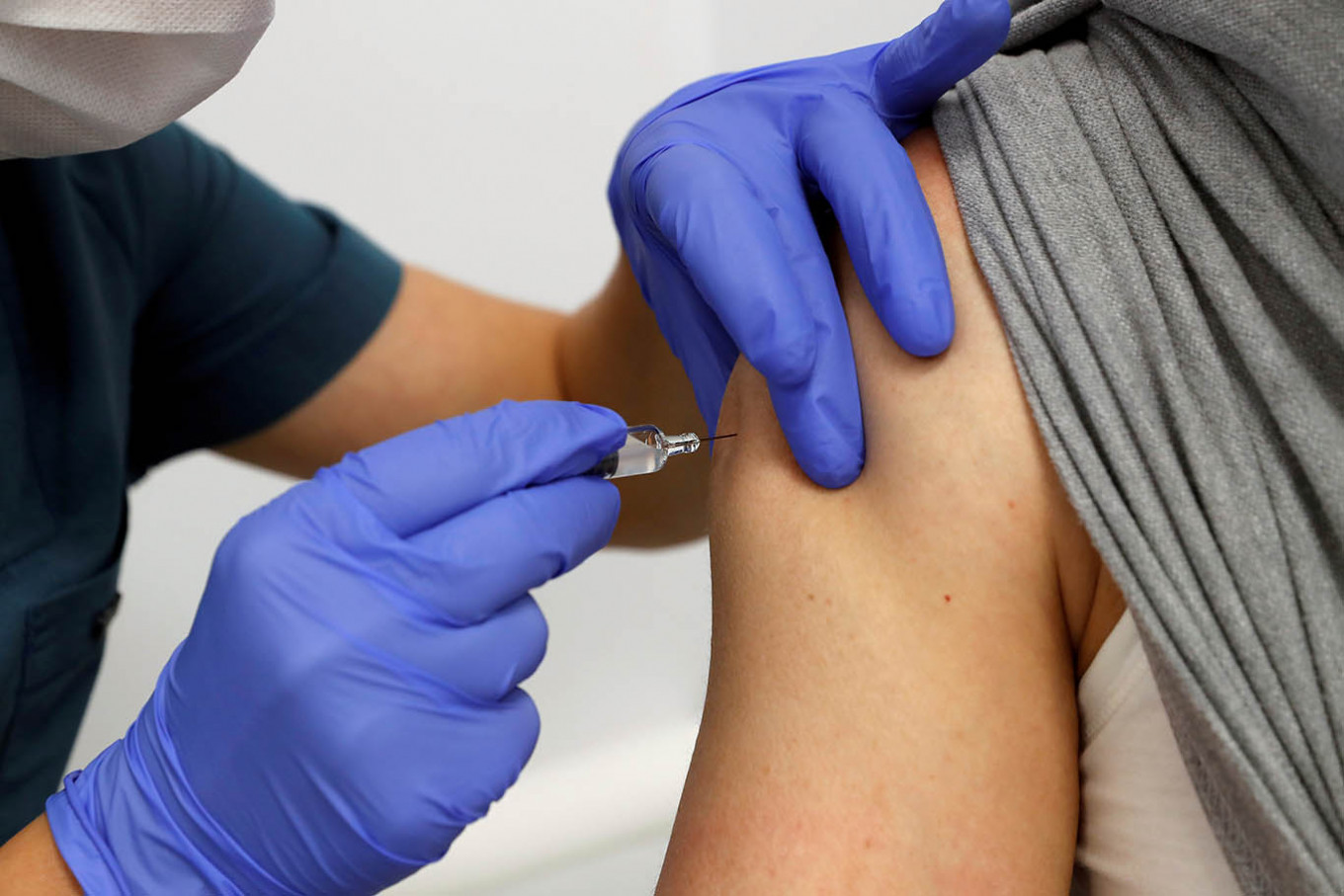Popular Reads
Top Results
Can't find what you're looking for?
View all search resultsPopular Reads
Top Results
Can't find what you're looking for?
View all search resultsHow to distribute vaccines is the big question
Transportation and logistics are key to distributing any future COVID-19 vaccines to 93 million Indonesians as per the government's plan.
Change text size
Gift Premium Articles
to Anyone
I
magine that a vaccine is the most effective way to stop the COVID-19 pandemic, and the world’s population of 7.8 billion is to undergo mass vaccination. The World Health Organization (WHO) has announced that two-thirds of governments in the world has joined its plan to buy and equitably distribute COVID-19 vaccines. But how can it be ensured that the vaccines will reach each person in need?
Air transportation will play a vital role in the worldwide distribution of the perishable cargo. The International Air Transport Association (IATA) deems that this would be the "mission of the century" in the history of air cargo transportation.
The air cargo industry has played an essential part during the pandemic. Aside from the considerable contraction in passenger traffic, air cargo transportation has quickly helped countries obtain much-needed healthcare and pharmaceutical goods.
Since vaccines are temperature-sensitive, however, they require a more advanced transportation and logistics system than general cargo.
IATA states that 8,000 Boeing 747 cargo aircraft must be made available to fulfill the global need for COVID-19 vaccines. Each region in the world has different challenges in preparing for this plan. More specifically, addressing these challenges will be critical for flight distribution in Southeast Asia, as the region lacks vaccine production facilities.
The Indonesian government is planning to vaccinate just 93 million Indonesians, or 35 percent of the population, CNN Indonesia reported. This proportion is insufficient to achieve herd immunity, which requires vaccinating a minimum 70 percent of the population (D'Souza & Dowdy, 2020).
Notwithstanding the national COVID-19 vaccination program, we need to assess Indonesia's logistical challenges in distributing the vaccine: aircraft type, airport/port capacity, special warehouses that meet cold chain standards, trained staff to handle the cargo, and last mile delivery via customized vehicles.
The first parameter is the type of aircraft: Not all planes can transport vaccines. Vaccine manufacturers must deliver the COVID-19 vaccine in arctic temperatures below minus 800 Celsius (Gelles, 2020). One aircraft in the market that is capable of this is the Boeing 747-8F, which has a climate-controlled cargo hold. However, freezer containers are also required to transport the vials of vaccine.
In terms of airport capacity, Indonesia will need 95 Boeing 747-8F aircraft based on IATA's estimation to provide vaccines for 93 million Indonesians. The country currently has 30 airports that serve international flights, of which 80 percent operate runways with the required dimensions to accommodate a Boeing 747-8F.
Nevertheless, the government has yet to publish its road map on vaccine distribution to each city or regency. As the nation’s COVID-19 epicenter, Jakarta is expected to be the first priority destination. The Soekarno-Hatta and Halim Perdanakusuma airports do not have any restrictions for serving this type of large aircraft.
For an archipelagic country like Indonesia, maritime transportation can be an alternative solution for distributing the vaccine. The capacity to handle refrigerated containers, also called reefer containers, is imperative aboard ships and at destination ports, and sadly, such facilities are elusive at many of the country’s ports.
In western Indonesia, such facilities are available at major ports, including Belawan in North Sumatra, Tanjung Priok in Jakarta, Tanjung Perak in Surabaya and Tanjung Mas in Semarang. In the eastern part of the country, major ports like Makassar have a limited number of reefer plugs, to which containers need to be connected to keep their cargo refrigerated after they have been unloaded. Significant facilities development will be required to use maritime transportation for vaccine distribution.
Logistics management is another challenge in vaccine distribution. The vaccine is certain to be distributed in stages due to the limited worldwide production capacity. Therefore, trained staff is needed to manage and maintain the vaccine stock.
One solution is to outsource vaccine logistics and distribution to a third-party logistics company. This can reduce delivery costs, inventory costs and total delivery time. At the same time, it could increase volume flexibility.
Third-party logistics companies are usually more experienced in and have more facilities for handling perishable cargo like vaccines than a government-managed supply chain. Efficient vaccine distribution will accelerate vaccine distribution and eventually help the country beat COVID-19 faster.
At the end of the day, the sooner we address the pandemic, the sooner we can recover the economy.
The writer is a transportation and logistics researcher based in Cambridge, Massachusetts, the United States.










